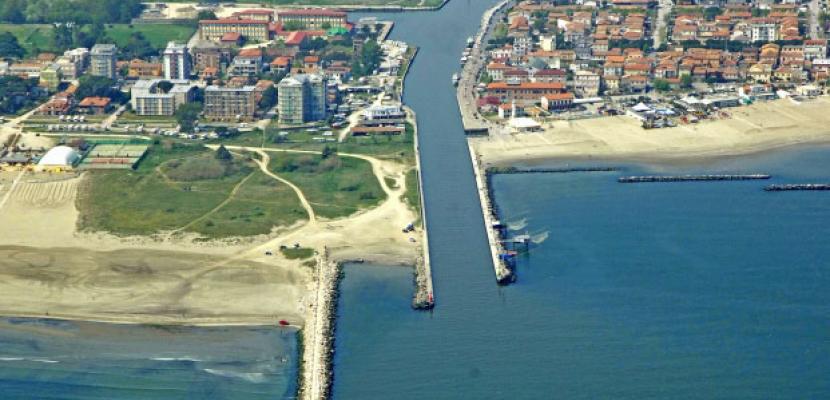Image

THESEUS Project – Innovative coastal technologies for safer European coasts in a changing climate
Published on 27 April 2020

Italy
This is the good practice's implementation level. It can be national, regional or local.
About this good practice
Coastal areas are vital economic hubs in terms of settlement, industry, agriculture, trade and tourism. There are already many coastal problems including erosion, flood risk and long-term habitat deterioration. As economies continue to develop the asset base at risk will grow, while accelerating climate change will increase the likelihood of damaging extreme events, as well as accelerate habitat decline. Existing coastal management and defence approaches are not well tuned to these challenges as they assume a static situation.
THESEUS develops a systematic approach to delivering both a low-risk coast for human use and healthy habitats for evolving coastal zones subject to multiple change factors. The innovative combined mitigation and adaptation technologies to be considered include ecologically-based mitigation measures, hydro-morphodynamic techniques, actions to reduce the impact on society and economy and GIS-based software to support defence planning.
The case studies examined in the project includes 2 Italian sites along the coast of the Emilia-Romagna Region: Cesenatico and Bellocchio. Both areas are characterized by a slight elevation of the land compared to the current sea level and are affected by subsidence and erosion. They are therefore vulnerable to coastal flooding.
For both sites, short, medium and long-term weather and sea scenarios were developed, taking into account the expected increase in the average sea level.
THESEUS develops a systematic approach to delivering both a low-risk coast for human use and healthy habitats for evolving coastal zones subject to multiple change factors. The innovative combined mitigation and adaptation technologies to be considered include ecologically-based mitigation measures, hydro-morphodynamic techniques, actions to reduce the impact on society and economy and GIS-based software to support defence planning.
The case studies examined in the project includes 2 Italian sites along the coast of the Emilia-Romagna Region: Cesenatico and Bellocchio. Both areas are characterized by a slight elevation of the land compared to the current sea level and are affected by subsidence and erosion. They are therefore vulnerable to coastal flooding.
For both sites, short, medium and long-term weather and sea scenarios were developed, taking into account the expected increase in the average sea level.
Expert opinion
The practice is about a project that aims to provide sustainable solutions for coastal areas with regards to challenges such as erosion, habitat deterioration and flood risk. The practice is especially relevant for other coastal regions facing similar problems. What could be interesting for them is the software tool and guidelines for stakeholders and decision-makers developed under the project for the setting up of Flood Risk Management Plans in coastal zones. The methodology was applied to four case studies, and the results from them could be further studied.
Resources needed
Budget 8.534.149,87 €; EU Contribution 6.530.000,00 €
Different competences: civil and coastal engineering, marine ecology, sociology, economics, meteorology, information technology and geomatics.
Different competences: civil and coastal engineering, marine ecology, sociology, economics, meteorology, information technology and geomatics.
Evidence of success
THESEUS developed a software tool and guidelines to be used by stakeholders and decision makers for the setting up of Flood Risk Management Plans in coastal zones. The developed guidelines explain how to apply the procedure to real cases. The methodologies were applied to 4 case studies: Cesenatico, the Gironde Estuary, the Teign estuary and Santander Bay (4 of the 8 sites of the project). General conclusions and recommendations were drawn from these studies to enable the results to be exported.
Potential for learning or transfer
Both cases studies are characterized by a slight elevation of the land compared to the current sea level and are affected by subsidence and erosion. They are, therefore, particularly vulnerable to coastal flooding. Since this situation can be found along all the coast of the region and in other parts of Italy, the solutions developed by the Project can be replicated not only in Emilia-Romagna, but also in similar coastal areas throughout Italy.
Moreover, the large number of partners from different countries (25 from 12 EU Member States and 6 international ones) allows replication and adaptation of the outcomes in several world countries and in different geographical, social and cultural contexts.
Several aspects could be considered in the view of a policy changes: ecosystem and naturalistic area preservation, infrastructures and heritage maintenance, refurbishment and risk assessment and prevention of climate change effects.
Moreover, the large number of partners from different countries (25 from 12 EU Member States and 6 international ones) allows replication and adaptation of the outcomes in several world countries and in different geographical, social and cultural contexts.
Several aspects could be considered in the view of a policy changes: ecosystem and naturalistic area preservation, infrastructures and heritage maintenance, refurbishment and risk assessment and prevention of climate change effects.
Further information
Website
Good practice owner
You can contact the good practice owner below for more detailed information.
Organisation
Alma Mater Studiorum - Università di Bologna

Italy
Emilia-Romagna
Contact
Communication Specialist